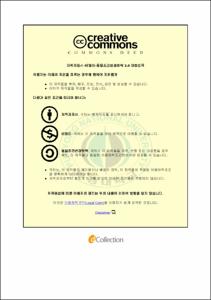Influences of Post Weld Heat Treatment on Fatigue Crack Growth Behavior of TIG Welded 6013 T4 Aluminum Alloy Joint
- Alternative Title
- TIG 용접한 Al 6013 T4 의 피로균열전파거동에 대한 용접 후열처리의 영향
- Abstract
- Welding of aluminum is generally performed either by gas metal arc welding or tungsten inert gas (TIG) welding. Gas metal arc welding offers the advantage of high deposition rate and high welding speed as well as deeper penetration because of high heat input. Failure analysis of the weldments indicated that fatigue alone is to be considered to account for most of the disruptive failures. Even though the failure properties of the weld metal is good, problems can caused when there is an abrupt change in section caused by excess weld reinforcement, undercut, slag inclusion, and lack of penetration after welding process. Post weld heat treatment (PWHT), defined as any heat treatment after welding, and is often used to improve the properties of a weldment. In concept, PWHT can encompass many different potential treatments. From the literature review, it is understood that there is no reported research work on the effect of PWHT on fatigue crack growth behavior of TIG welded 6013 T4 aluminum alloy joint according to artificial aging time.
This work focused on developing the influence of the PWHT-T82 on fatigue crack growth behavior of TIG butt welded Al 6013 T4 sheets. Crack growth tests were carried out on compact tension (CT) specimen for the longitudinal welded butt joint direction and centre cracked tension (CCT) specimen for the transverse welded butt joint direction. The T82 heat treatment was varied in three artificial aging times of 6, 18 and 24 hours. The T82 heat treatment with artificial aging variations were tested for their fatigue crack growth rates at the base metal zone, the heat-affected zone (HAZ), and the welded metal zone. The fatigue crack growth test was performed in 15-20% stress level, the load frequency 5-11 Hz, and stress ratio of R=0.3. The 7-point incremental polynomial method was used for data processing at the Paris equation according to the standard of ASTM E-647. It has been observed that the various aging in heat treatment T82 are sensitive to the mechanical properties (fatigue crack growth rate test, tensile test, and hardness).
The results of fatigue crack growth rate test for PWHT-T82 longitudinal welded butt joint aging variation, the highest fatigue resistance in PWHT-T82 with 24 hours aging (m = 9.28 and C = 2.16 x 10-16), and lowest is PWHT-T82 with 6 hours aging (m = 7.09 and C = 9.19 x 10-14). The results of fatigue crack growth rate test for PWHT-T82 transverse welded butt joint aging variation, the highest fatigue resistance in PWHT-T82 with 24 hours aging (m = 6.74 and C = 9.44 x 10-19), and lowest is PWHT-T82 with 6 hours aging (m = 10.36 and C = 9.18 x 10-23). On fatigue crack propagation testing with PWHT-T82 and variations aging decreased fatigue strength, as compared with base metal and as welded specimens. Decrease in fatigue strength is due to changes in microstructure (structure with increasingly coarse grains) as a result of the heat effect on the process of welding and tensile residual stress in the perpendicular direction.
- Issued Date
- 2012
- Awarded Date
- 2012. 8
- Type
- Dissertation
- Publisher
- 부경대학교
- Alternative Author(s)
- 구나완두이하야디
- Affiliation
- 부경대학교 대학원
- Department
- 대학원 기계설계공학과
- Advisor
- 김선진
- Table Of Contents
- Contents
List of figures………….………………………………….…………………………iii
List of tables…….……….………………………………………………………......vii
Nomenclature……………………………………………………………………….viii
Abstract……………………………………………………………………………..x
I. Introduction……………....………………...…………...…........…………1
1.1 Background……………………………………………………………….1
1.2 Motivation of the research………………………………………………2
1.3 Objective and method of the research……………….…………..………..3
1.4 Scientific contribution……………….………….…………...……………5
1.5 Outline of this dissertation……..……………….…………...……………6
References…………………………………………….………….……………………7
II. Background Knowledge………………………..…..…………….……..8
2.1 Literature review………………………...………………………………..8
2.2 Design and material selection…………………………..……………….10
2.3 Heat treatment of aluminum alloys………………………..…………….12
2.4 Welding process…………………………………………………………18
2.5 Tungsten inert gas (TIG)………………………….………..……………23
2.6 Tensile test………………………………………..……………………..34
2.7 Theories of fatigue crack growth rate………………………...……….38
References……………………………………...…………………………………….49
III. Experiment Method………………..……………..…..…………….…..53
3.1 Experimental procedures…………………...………………...…………53
3.2 Material composition……………………………………..……………53
3.3 Specimens preparation………………………….……………...………..55
3.4 Tensile test………………………………………..…………….……….59
3.5 Fatigue crack growth rate testing…………………..…………...……….61
3.6 Micro-hardness testing…………………………...……...………………65
3.7 Microstructural characterization……………………………………….67
References…………………………………................……..………………………..69
IV. Results and Discussion……………....………….…...…........…………70
4.1 Tensile properties…………..…………………………………..………..70
4.2 Fatigue crack growth……………......……….………………………….74
4.3 Micro-hardness testing……………………………………………….….84
4.4 Microstructure testing………..………………………………….………85
References…………………………….…………………………..……….…………96
V. Conclusions…………………………..…....…………...…........…………99
VI. Future Works……………....…………...…............................…………101
Acknowledgments……………..……………………………………….…………..103
- Degree
- Doctor
- Files in This Item:
-
-
Download
 Influences of Post Weld Heat Treatment on Fatigue Crack Growth Behavior of TIG Welded 6013 T4 Alumin.pdf
기타 데이터 / 5.56 MB / Adobe PDF
Influences of Post Weld Heat Treatment on Fatigue Crack Growth Behavior of TIG Welded 6013 T4 Alumin.pdf
기타 데이터 / 5.56 MB / Adobe PDF
-
Items in Repository are protected by copyright, with all rights reserved, unless otherwise indicated.